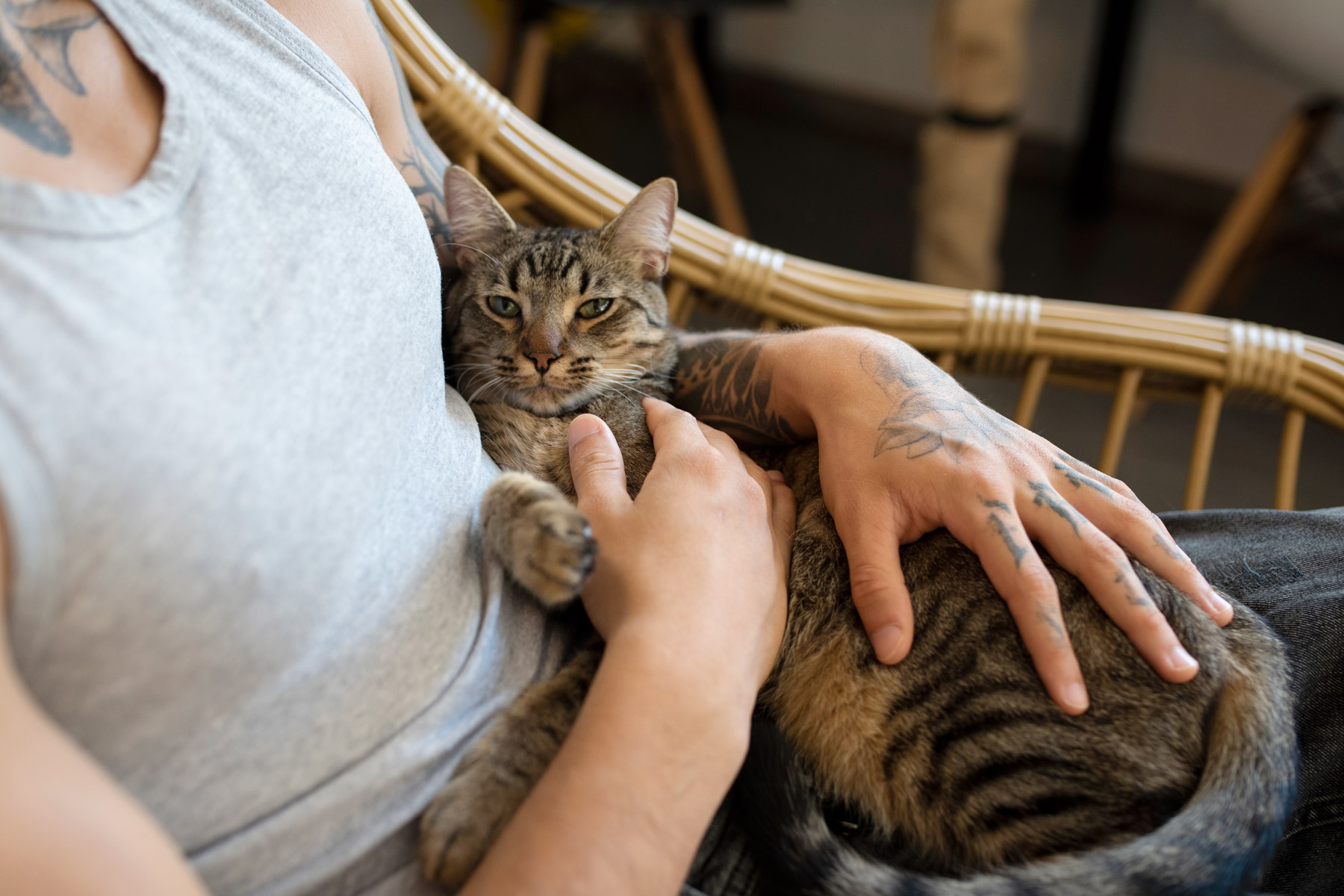Meeting new people can be overwhelming for a shy cat. Whether it’s a visitor, a new family member, or even a cat sitter, unfamiliar faces often trigger stress and fear. As someone who has worked with countless cats of all temperaments, I’ve seen how a little patience and the right approach can make a huge difference. In this article, I’ll share practical tips to help a shy cat feel comfortable around new people. From understanding their body language to creating a safe space, these strategies will build trust and ensure your cat feels secure—even when meeting someone new.
Understanding a Shy Cat’s Behaviour
Shy cats often express their unease through clear behavioural cues. Recognizing these signs is the first step toward helping them feel safe:
- Hiding: Retreating under furniture or to a favourite quiet spot.
- Body Language: Flattened ears, lowered tail, or puffed-up fur.
- Vocalizations: Growling, hissing, or meowing in a distressed tone.
- Freezing or Avoidance: Staying still or keeping a noticeable distance from the new person.
Shyness can stem from various factors, such as genetics, lack of early socialization, or past negative experiences. Whatever the cause, it’s important to respect their boundaries and avoid forcing interaction.
Creating a Safe Environment
A shy cat needs a secure, predictable environment to feel at ease. Here’s how to set them up for success:
- Designate a Quiet Space: Create a room or corner where your cat can retreat when feeling overwhelmed. Include familiar items like their bed, blanket, or toys.
- Provide Hiding Spots: Boxes, cat tunnels, or furniture with covered spaces give them a sense of safety.
- Minimize Noise: Loud sounds can increase stress. Keep the environment calm during introductions.
- Use Comforting Scents: Leave items that smell like you (or the person they’re meeting) nearby to help them acclimate gradually.
Using Positive Reinforcement
Positive reinforcement helps create good associations with new people:
- Treats: Offer tasty rewards to encourage bravery. The new person can gently toss a treat in the cat’s direction to build trust.
- Toys: Engage the cat with interactive toys like feather wands, helping them associate fun with the newcomer.
- Praise: Use gentle words and soothing tones to reinforce calm behaviour.
Patience is Key
Every cat is unique, and some may take longer to warm up to new people. Celebrate small milestones, like a shy cat peeking out from a hiding spot or sniffing the visitor’s hand. Building trust takes time, so manage your expectations and let progress unfold naturally.
If a cat remains fearful despite your efforts, it’s worth consulting a veterinarian or a professional behaviourist. They can rule out any underlying health issues or suggest tailored strategies to help your cat feel more confident.
Helping a shy cat feel comfortable around new people is a rewarding process that requires empathy, patience, and understanding. By respecting their boundaries and creating positive experiences, you can help them build trust and feel secure. Over time, even the shyest cats can learn to feel more at ease, showing you a side of their personality that’s truly heartwarming.



